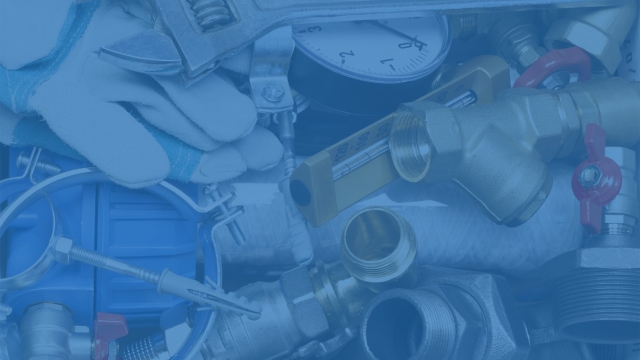When it comes to plumbing issues, they can often catch us off guard and cause a great deal of stress. Whether it’s a clogged drain, a leaky faucet, or a burst pipe, these problems can quickly disrupt our daily routines and leave us feeling helpless. However, with the right knowledge and a few handy tips and tricks, you can save yourself time, money, and frustration. In this plumbing guide, we will explore 10 essential strategies to help you master those pesky plumbing woes once and for all. So, grab your toolbox and let’s dive in!
1. Common Plumbing Problems

When it comes to plumbing, there are a number of common problems that many homeowners face. Recognizing these issues early on can help you address them before they become major headaches. Here are three of the most frequent plumbing woes encountered by homeowners:
Leaky Faucets: Leaky faucets are not only annoying, but they can also waste a significant amount of water over time. A dripping faucet is often caused by a worn-out washer or a faulty seal. To fix this issue, you can replace the washer or have a professional plumber take a look.
Clogged Drains: Clogged drains are a common occurrence in many households. They can be caused by a buildup of hair, soap residue, food particles, or other debris. One way to prevent clogs is to use drain covers and avoid pouring grease or coffee grounds down the drain. For minor clogs, you can try using a plunger or a drain snake to clear the blockage.
Running Toilets: A running toilet can lead to wasted water and a higher water bill. The problem is often caused by a faulty flapper valve or a problem with the fill valve. You can try adjusting the chain or the fill valve to fix the issue. If that doesn’t work, it may be necessary to replace the faulty parts.
By being aware of these common plumbing problems and knowing how to address them, you can save yourself time, money, and unnecessary stress. Remember, when in doubt, it’s always best to consult a professional plumber to ensure the problem is properly resolved.
2. Essential Tools and Equipment
In order to successfully tackle plumbing issues, it is essential to have the right tools and equipment at your disposal. Here are some key items that every aspiring plumber should have in their toolkit:
Adjustable Pipe Wrench: A versatile tool used for tightening and loosening pipes and fittings. Its adjustable jaws allow it to accommodate various pipe sizes with ease.
Plunger: This simple yet effective tool is a must-have for clearing clogged drains and toilets. Make sure to have both a sink plunger and a toilet plunger for different types of blockages.
Pipe Cutter: When it comes to cutting pipes with precision, a pipe cutter is your go-to tool. Its sharp cutting wheel helps create clean and accurate cuts for repairs or installations.
Best Plumbing Service DirectoryPliers: A good pair of pliers is indispensable for many plumbing tasks. Channel-lock pliers, also known as tongue-and-groove pliers, are particularly useful for gripping and turning pipes and fittings.
Teflon Tape: This thin, white tape is used to create watertight seals on threaded pipe connections. Wrapping it around the male threads helps prevent leaks and ensures a secure joint.
Plumbers Putty: Ideal for creating watertight seals around faucets, drains, and other plumbing fixtures. It can be easily molded and shaped to fill any gaps or spaces, providing a reliable seal.
Hacksaw: Useful for cutting through metal pipes, nuts, bolts, and other materials. Choose a hacksaw with a comfortable grip and adjustable blade tension for better control.
Auger or Plumbing Snake: When dealing with stubborn drain clogs, an auger or plumbing snake is a valuable tool. It helps break up blockages and retrieve items stuck in the pipes.
Pipe Wrenches: In addition to an adjustable pipe wrench, it’s also helpful to have a set of fixed-size pipe wrenches. These wrenches provide a firm grip on pipes and fittings of specific sizes.
Safety Gear: Last but not least, prioritize safety by wearing protective equipment such as gloves, safety glasses, and a helmet, especially when working with potentially hazardous substances or in tight spaces.
By having these essential tools and equipment within reach, you’ll be well-prepared to handle a wide range of plumbing issues efficiently and confidently. Remember to invest in quality items that will withstand the test of time and ensure successful plumbing endeavors.
3. Proactive Plumbing Maintenance
Regular and proactive maintenance is essential for keeping your plumbing system in good working order. By taking a few simple steps, you can prevent major plumbing issues from arising and save yourself from costly repairs.
Check for Leaks: Regularly inspect your faucets, pipes, and fixtures for any signs of leaks or drips. Even a small leak can waste a significant amount of water over time, leading to higher water bills. Fixing leaks promptly can help prevent water damage and conserve water.
Clear Drainage: To avoid clogged drains, be mindful of what you flush down toilets and drains. Avoid putting grease, oil, hair, and other debris down your drains, as they can cause blockages. Use drain strainers or screens to catch any solid particles and clean them regularly.
Test Water Pressure: Checking your water pressure periodically is important to ensure it’s within the recommended range. High water pressure can put stress on your pipes and fixtures, leading to leaks or bursts. A pressure gauge can be easily attached to an outdoor faucet to measure the water pressure.
Remember, proactive plumbing maintenance is essential for preventing plumbing problems and maintaining the longevity of your plumbing system. By following these simple tips, you can save both time and money in the long run.


